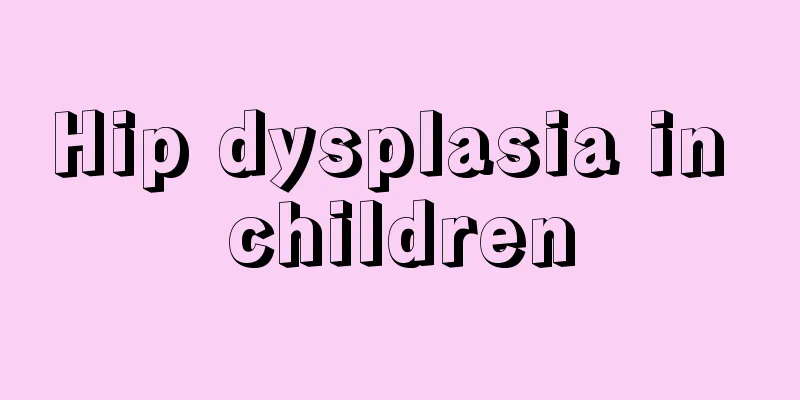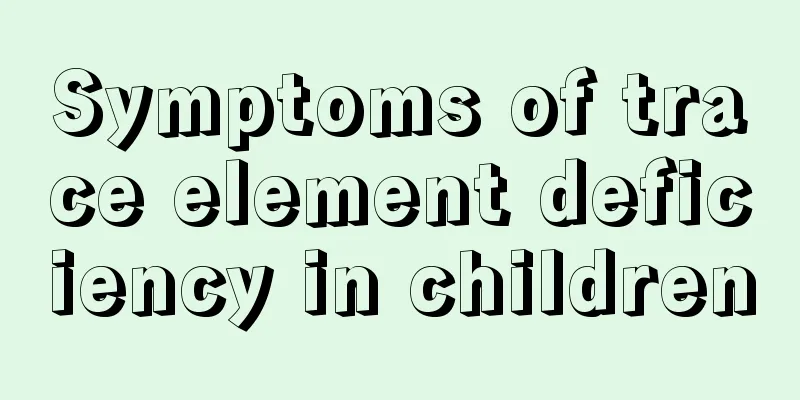Hip dysplasia in children

|
During a child's growth process, bones develop the fastest. However, there are also some children who have skeletal maldevelopment due to congenital reasons. For example, a common disease in orthopedics is developmental dysplasia of the hip, and this disease is what parents need to pay attention to. So, if a child has hip dysplasia, what kind of treatment should be chosen? The treatment method varies depending on the age. Developmental dysplasia of the hip (DDH), also known as developmental dislocation of the hip, is the most common hip disease in pediatric orthopedics, with an incidence rate of about 1‰. The incidence rate in girls is about 6 times that in boys, the left side is about twice that of the right side, and bilateral incidence accounts for about 35%. DDH includes hip dislocation, subluxation and acetabular dysplasia, which is more representative of all the deformities of the disease than the previous name "congenital hip dislocation". Causes Caused by many factors. Risk factors for this disease include: girls, first child, multiple births; family history; malposition of the fetus, such as breech presentation, low amniotic fluid; plantar fasciitis or muscular torticollis; incorrect swaddling method - candle wrapping. Clinical manifestations The clinical manifestations may vary depending on the child's age, degree of dislocation, unilateral or bilateral disease, etc. The main manifestations are as follows: 1. Children with unilateral dislocation may have asymmetric buttocks and thigh lines in the early stages, but the specificity is not strong. One hip is adducted. The perineum becomes wider in children with bilateral dislocation. 2. Children with unilateral dislocation have unequal length of lower limbs, and children with bilateral hip dislocation have a limp gait and duck walk during walking. The goal of DDH treatment is to achieve concentric reduction of the hip joint, which can provide good conditions for the development of the femoral head and acetabulum, while preventing ischemic necrosis of the femoral head. Treatment varies depending on the age of the child and the severity of the disease. The earlier the treatment, the better the effect. On the contrary, as age and treatment complexity increase, the risk of complications such as avascular necrosis of the femoral head increases, and children may develop degenerative changes of the hip joint and osteoarthritis in the future. Treatment methods vary according to age: 1. Newborns and infants under 6 months old Diagnosis is best made in the neonatal period, and treatment is prompt if detected. The most commonly used treatment is the Pavlik harness, which has a 95% recovery rate for hips with a positive Ortolani sign. The Pavlik onesie harness is suitable for infants with DDH under 6 months old. The failure rate of the Pavlik onesie harness is greater than 50% for infants over 6 months old. During the first 3 weeks of treatment, the Pavlik harness should be worn and checked weekly, and ultrasound examinations should be performed. If the hip joint is reduced and stable, the follow-up time should be extended until the ultrasound examination is normal. If the Pavlik harness is not reduced after 3 weeks of treatment, the treatment has failed and other treatments should be used. Complications of Pavlik harness treatment include: downward dislocation of the hip, femoral nerve and brachial plexus paralysis, and avascular necrosis of the femoral head. 2. Children aged 6 to 18 months For children in this age group, subluxation or dislocation of the hip should be treated with closed or open reduction as the first choice, and bracing can be used for those with acetabular dysplasia. Closed reduction must be performed under basic anesthesia. If intraoperative arthrography shows that the reduction is satisfactory and stable, human position plaster fixation will be given. The hip joint is required to be flexed between 100 and 110°, and the abduction cannot exceed 60°. Excessive abduction of plaster and brace fixation can easily cause ischemic necrosis of the femoral head. If the closed reduction is unsatisfactory or unstable, open reduction of the hip joint is required. Generally, simple open reduction of the hip joint plus human position plaster fixation is performed. After plaster fixation, fluoroscopy is performed in the operating room to understand the reduction of the hip joint. Before discharge, the hip joint should be reviewed in AP radiograph and, if necessary, CT or MRI examination should be performed to understand the reduction status. Ultrasound examination can be used for some follow-up examinations after discharge to reduce the number of X-ray examinations. Usually the plaster is fixed for about 3 months and then replaced with a brace for about 3 months. The potential for acetabulum development after closed or open reduction is great and can continue for 4 to 8 years after reduction. Most children with DDH do not need a second acetabular or femoral surgery. 3. Children aged 18 months to 8 years The acetabulum development potential of DDH children over 18 months old is very poor. Most of them need to undergo pelvic osteotomy at the same time as hip open reduction. DDH children under 4 years old can choose Salter, Pemberton, Dega and other pelvic osteotomies. For children with high dislocation, high joint pressure after reduction, large anteversion angle and neck-shaft angle, shortening, derotation and varus osteotomy of the proximal femur are required at the same time. For children older than 4 years old, triple pelvic osteotomy can be performed at the same time as the above surgery for complex situations such as re-dislocation after surgery. The doctor needs to decide the specific surgical method based on factors such as pathological changes in the hip joint and the age of the child. |
<<: The difference between baby convulsions and shaking
>>: What to do if your baby has a red throat and fever
Recommend
Is it normal for a child to change teeth at the age of 6?
It is a normal physiological phenomenon for child...
How to train premature babies to prevent cerebral palsy
Cerebral palsy is a neurological disease of the b...
How to treat rickets in babies?
Children are the treasures of the family. When a ...
Does your child vomit out everything when he coughs while sleeping at night?
The baby's stomach and intestines are very we...
What to do if your baby's urine is yellow
As soon as the baby is born, her diet and daily l...
What are the benefits of children practicing Taekwondo?
Speaking of Taekwondo, a martial art, many people...
Is it good for children to drink yogurt regularly?
With the improvement of living standards, milk ha...
Anal bleeding in children
Anal bleeding is a very common disease in daily l...
Is breast development normal for a 10-year-old girl?
Breasts are a very important part of a woman'...
Reasons for slow weight gain in newborns after adding complementary foods
How many newborns gain weight slowly? This is som...
How to rule out giant intestinal congestion in babies
Many people don’t know how to eliminate giant ent...
The reason why the baby's tongue is yellow
It is particularly painful for an inexperienced m...
What to do if the baby has diarrhea after drinking milk
Everyone knows that the stomach and intestines of...
Why does a 10-year-old girl start to develop breasts?
Adolescence is the best period of development for...
What is the reason why small red spots appear on children’s faces when they get hot?
Because living conditions are better now, almost ...









